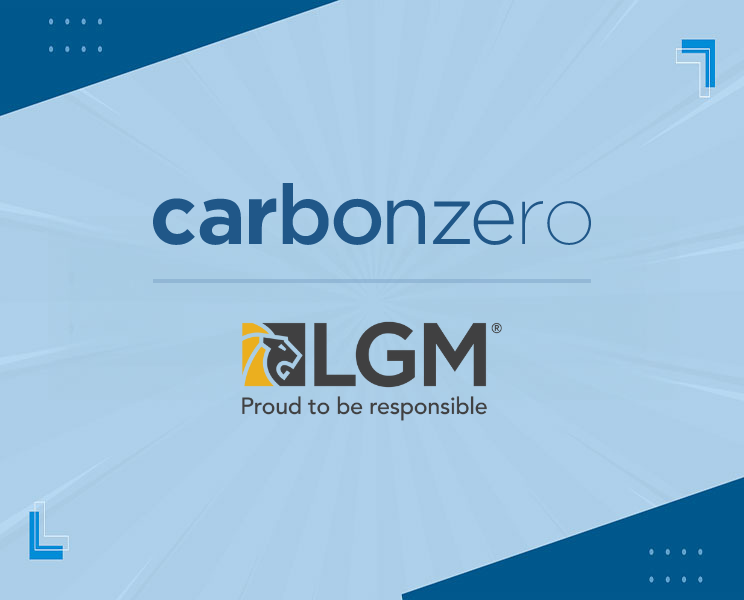As originally appeared in Autosphere on February 1, 2024.
Managing and exceeding expectations through the entire vehicle sales process.
One of the biggest challenges often facing dealers, is converting promising leads into actual customers. While there are more options than ever as it relates to generating leads to your website or business, maintaining that consumer interest, and translating it into an actual sale can be challenging. A big factor is training.
According to Jake Stacey, Executive Vice President, Sales and Training for LGM Financial Services, creating that seamless sales experience from beginning to end requires having a comprehensive and standardized onboarding program. “One of the dealer groups we work with in Eastern Canada has a specific onboarding process,” she says, noting that it is built around the organizational culture, with a focus on three key pillars—product knowledge, company processes/culture and engagement strategies with customers.
Winning strategy
“It doesn’t matter which dealership within the group their employees are with,” says Stacey, “all follow the exact same trajectory, meaning the customer is going to have that same experience. And it’s consistently proved to be a winning strategy.”
When it comes to engaging with new leads, Greg Uland, Vice President, Marketing at Reynolds and Reynolds, says that flexibility and convenience are two essential keys to success. “Consumers have an idea of how they want to communicate and transact, and all retailers, especially dealers, have to meet them where they are whether that is online, in-person, or more commonly a combination of both,” Uland explains. That’s why he says, it’s important for dealerships to be able to accommodate the same sales process online as it would occur in-store, so that when the customer does become engaged and move toward finalizing a purchase, the transition from online to in-store is seamless.
Other factors that hinder the successful conversion of leads into customers include the following:
- Timely Response
- Effective Lead Handling
- Having the Right People
Maury Marks, President & CEO at Quorum Information Technologies, which provides a range of advanced retail solutions for dealers, says that dealers who are effective at handling leads, respond to them in less than five minutes during business hours and have an automated response set up for enquires outside those opening hours.
Regarding the lead handling process itself, he notes that having an advanced, reliable process really makes a difference. All too often, explains Marks, dealers are still relying on antiquated processes for lead handling, where the lead comes in and ends up in the CRM or sales manager’s email inbox, hours before it is assigned to someone. “During that time,” explains Marks, “this customer has been actively searching for a vehicle and may have sent leads to several other dealers with faster response times, significantly lowering the odds of converting that lead to an appointment at your store.”
Leveraging your CRM
That’s why he says, dealers that are able to utilize an advanced CRM like DealerMine (part of the Quorum portfolio), can really stand apart from the herd because they can automate the lead process. Additionally, consistent follow-up after the initial contact goes a long way to boosting engagement with the consumer.
Marks says that even within CASL compliance laws, this automated process enables regular follow-up with the client until they request no further contact. It also serves to improve cold lead follow-up and provide consistent reminders, even if a consumer takes several months to decide on purchasing a vehicle.
Furthermore, it also helps ensure that your dealership remains top of mind when it actually comes time to buy that car or truck.
Marks also notes that monitoring the effectiveness of lead handling is also critical since it enables dealers to measure success. For example, using Quorum’s QAnalytics tool, dealers “can easily see who is converting the most leads to appointments and driving the most revenue. By tracking the best lead sources for ROI, dealers can then invest in the highest converting sources.”
The right people
Another factor is having the right people. You can have the best technology in the world, but, as Jake Stacey notes, if your staff isn’t properly able to leverage its capabilities, it’s essentially all for nothing. And when that happens, you end up with a clunky experience that turns off customers and causes high staff turnover at the dealership. This is why it’s so important to have websites that are optimized for mobile use, as well as leveraging the customer’s data and preferences to provide information that’s specifically relevant to them.
Brent Ravelle, President of the Ravelle Group of Companies which operates multiple dealership locations in Southwestern Ontario, says the COVID-19 pandemic proved to be a huge disruptor in the lead generating and sales process. While (initially) it required many dealers to fully embrace digital retailing and a no-contact experience, it also impacted the continuity of the process. Many dedicated sales teams saw their numbers dwindle during the pandemic, meaning that as dealers have returned to pre-pandemic operating practices, many are facing lead counts that are half of what they used to be. From his own experiences, Ravelle says his dealerships have been witnessing the biggest success in leads that come directly to the dealership and not through third-party sites. He notes that while it has never been easier to leverage the power of digital technology, such as using tools like FaceTime or Google Meet to share videos of inventory and speak to the customer at the initial engagement phase, as well as do walkarounds of the type of vehicle the customer is interested in, ultimately it boils down to knowing your customer.
And in most cases, he says, clients want to meet face to face and want to come to the store, since buying a vehicle remains very much a visceral experience.
AI and its role in the process
Over the last few years, artificial intelligence (AI) has become a business and industry buzzword. Yet, the reality is, that it’s often misunderstood, especially when it comes to sectors like automotive retail. At Quorum Information Technologies, Maury Marks explains that while AI is an emerging tool, it’s important to understand its limitations. Contrary to popular belief, the term AI is a misnomer. What it really is, is a Large Language Model (LLM) tool. “It responds based on available data, lacking the ability to reason or rationalize,” explains Marks. As a result, it’s not able to understand conditions beyond its database and operating parameters. For example, it is not really suitable for use as an upselling tool, since it can’t provide answers beyond those specifically requested from the customer.
Supplement for sales staff
That’s why, dealers need to understand its limitations, and that for a nuanced business such as automotive retail, it should be used to supplement highly trained sales staff, as well as a versatile CRM and Business Development Centre (BDC) like that offered through DealerMine. Marks notes that a good BDC not only provides performance standards and daily data monitoring/tracking metrics but also human BDC coordinators who can effectively communicate with consumers, delivering them confidence and helping create a long-lasting relationship based on their specific vehicle needs.
At Reynolds and Reynolds, Greg Uland says that when it comes to AI, dealers also need to understand how far they can push the technology with customers before human interaction takes over since it is often critical to whether that lead will translate into a customer and ultimately, a sale.
Customers in the research phase are typically much more satisfied with AI chat,” says Uland. “They are looking for answers to general questions and they want them immediately.” He notes that in these kinds of situations, AI can thrive, since it can understand the desired information, collect the needed information from the customer, and then provide an immediate response. On the other hand, customers in the engagement phase have more specific and conversational questions. “They are moving down the buying funnel and need to feel connected in order to convert,” explains Ulland, who notes that this phase makes or breaks the dealership’s conversion rate. “This is when live chat agents are most effective,” he says. Since they are “engaging in dialogue with a customer to help them feel comfortable moving to the buy-ready phase of the buying cycle.”
“At the end of the day,” explains Brent Ravelle of the Ravelle Group of Companies, “we’re at a point in automotive retail where we need that flexibility to deliver the customer a process they want, and we can do that by leveraging digital tools to enhance the human experience.”
At LGM Financial Services, Jake Stacey notes that while we’ve seen an increase in consumers leveraging digital tools to help them find their next vehicle, it’s important for dealers to remember that the days of “selling the car,” are long gone. Instead, converting leads into happy customers means educating them about the ownership experience, including what various features do, such as advanced driver assist functions, infotainment, and connectivity, as well as being transparent when it comes to fees, pricing, and any additional costs. “Tell the customer everything,” she says, “and tell it in a way that works for them.”


